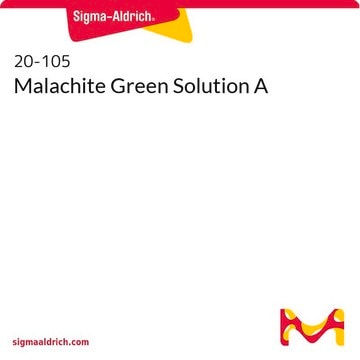Products may be shipped at a different temperature than the recommended long-term storage temperature. If the product quality is sensitive to short-term exposure to conditions other than the recommended long-term storage, it will be shipped on wet or dry-ice. If the product quality is NOT affected by short-term exposure to conditions other than the recommended long-term storage, it will be shipped at ambient temperature. As shipping routes are configured for minimum transit times, shipping at ambient temperature helps control shipping costs for our customers. For more information, please refer to the Storage and Transport Conditions document: https://www.sigmaaldrich.com/deepweb/assets/sigmaaldrich/marketing/global/documents/316/622/storage-transport-conditions-mk.pdf
MAK113
ATPase/GTPase Activity Assay Kit
sufficient for 200 colorimetric tests
Select a Size
About This Item
Recommended Products
usage
sufficient for 200 colorimetric tests
detection method
colorimetric
relevant disease(s)
cancer
storage temp.
2-8°C
Related Categories
General description
Features and Benefits
Suitability
Principle
signalword
Warning
hcodes
pcodes
Hazard Classifications
Met. Corr. 1
Storage Class
8B - Non-combustible corrosive hazardous materials
flash_point_f
Not applicable
flash_point_c
Not applicable
Choose from one of the most recent versions:
Certificates of Analysis (COA)
Don't see the Right Version?
If you require a particular version, you can look up a specific certificate by the Lot or Batch number.
Already Own This Product?
Find documentation for the products that you have recently purchased in the Document Library.
Customers Also Viewed
-
How is shipping temperature determined? And how is it related to the product storage temperature?
1 answer-
Helpful?
-
-
How can I determine the shelf life / expiration / retest date of this product?
1 answer-
If this product has an expiration or retest date, it will be shown on the Certificate of Analysis (COA, CofA). If there is no retest or expiration date listed on the product's COA, we do not have suitable stability data to determine a shelf life. For these products, the only date on the COA will be the release date; a retest, expiration, or use-by-date will not be displayed.
For all products, we recommend handling per defined conditions as printed in our product literature and website product descriptions. We recommend that products should be routinely inspected by customers to ensure they perform as expected.
For products without retest or expiration dates, our standard warranty of 1 year from the date of shipment is applicable.
For more information, please refer to the Product Dating Information document: https://www.sigmaaldrich.com/deepweb/assets/sigmaaldrich/marketing/global/documents/449/386/product-dating-information-mk.pdfHelpful?
-
-
Does malachite green react with phosphate molecules in which one oxygen is substituted by sulfur when using GTPgammaS instead of GTP to detect RAN GTPase activity? Additionally, could malachite green turn blue in reaction with other molecules besides phosphate?
1 answer-
Unfortunately, it has not been tested whether malachite green also reacts with phosphate molecules in which one oxygen is substituted with sulfur, and there is uncertainty about other molecules that could cause a blue color change. It is also possible that there might be contaminating free phosphate in the materials used for the assay. The datasheet for the kit contains instructions on how to check for any contaminating free phosphate.
Helpful?
-
-
Would storage of the MAK113 ATPase/GTPase Activity Assay Kit at -20°C for 4 days affect its performance?
1 answer-
Based on available information, it is not expected that storage at -20°C would significantly affect the kit’s performance or shelf life.
Helpful?
-
-
Is the MAK113 ATPase/GTPase Activity Assay Kit compatible in both acidic and basic pH environments? Within what pH range is this assay compatible? I am attempting to measure the GTPase activity within a pH range of 5.5 - 8.0.
1 answer-
As per the guidance, the assay has been optimized with Assay Buffer at pH 7.5. It's important to note that the assay is pH dependent, and the enzymatic reaction is stopped by adding an acidic reagent. With the samples themselves expected to be largely neutralized by the assay buffer, they should be suitable within the pH range of 5.5 to 8. However, it is not advisable to prepare a different buffer to test the reaction under more acidic conditions. There is a possibility that conducting the reaction under more acidic conditions, like pH 5.5, might inhibit enzyme activity.
Helpful?
-
-
What is the detailed composition of Malachite Green Reagent (MAK 113A) in the ATPase/GTPase Activity Assay Kit (MAK113)?
1 answer-
A detailed composition of the reagent is not available as this is considered proprietary information.
Helpful?
-
Active Filters
Our team of scientists has experience in all areas of research including Life Science, Material Science, Chemical Synthesis, Chromatography, Analytical and many others.
Contact Technical Service






